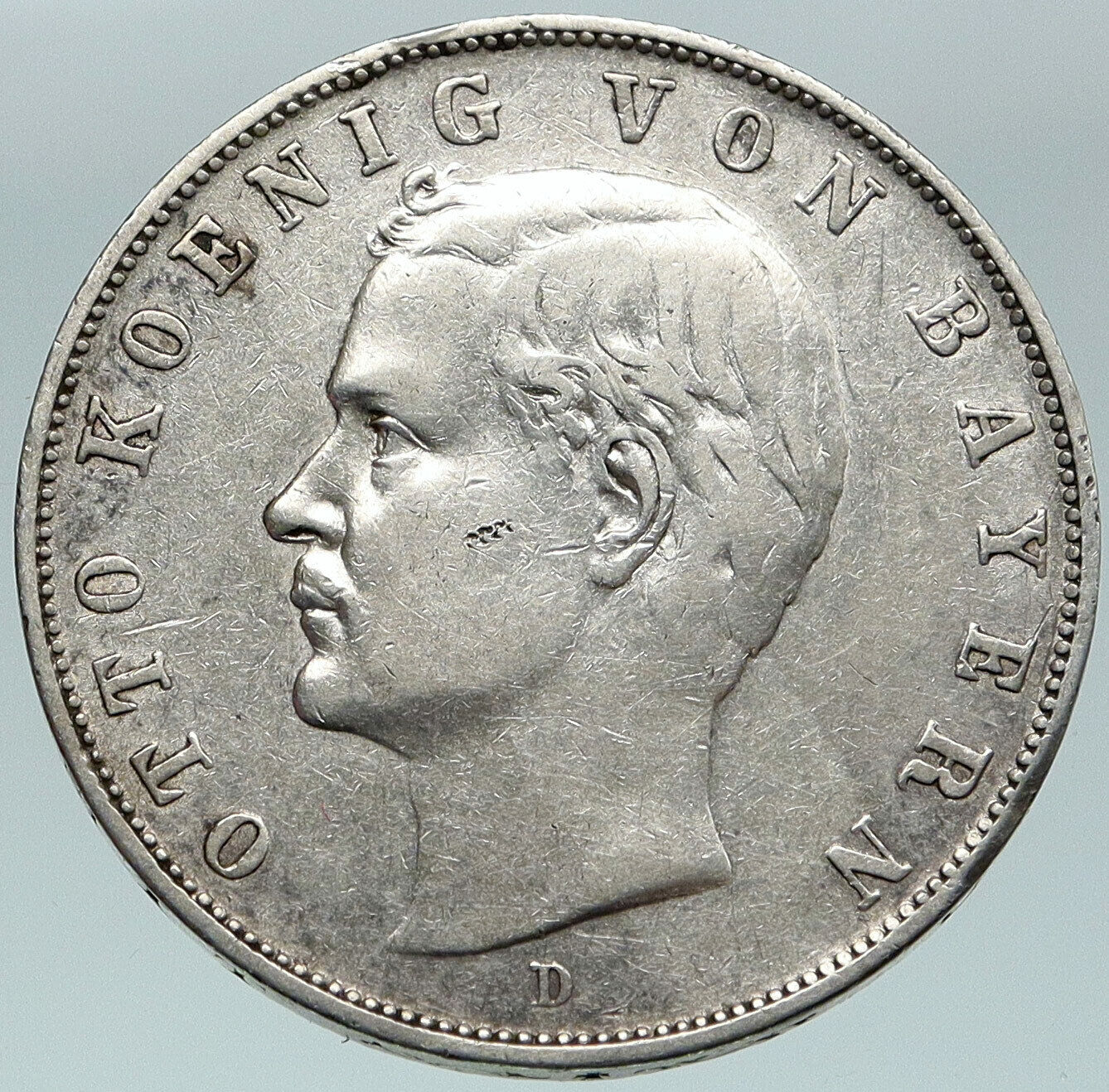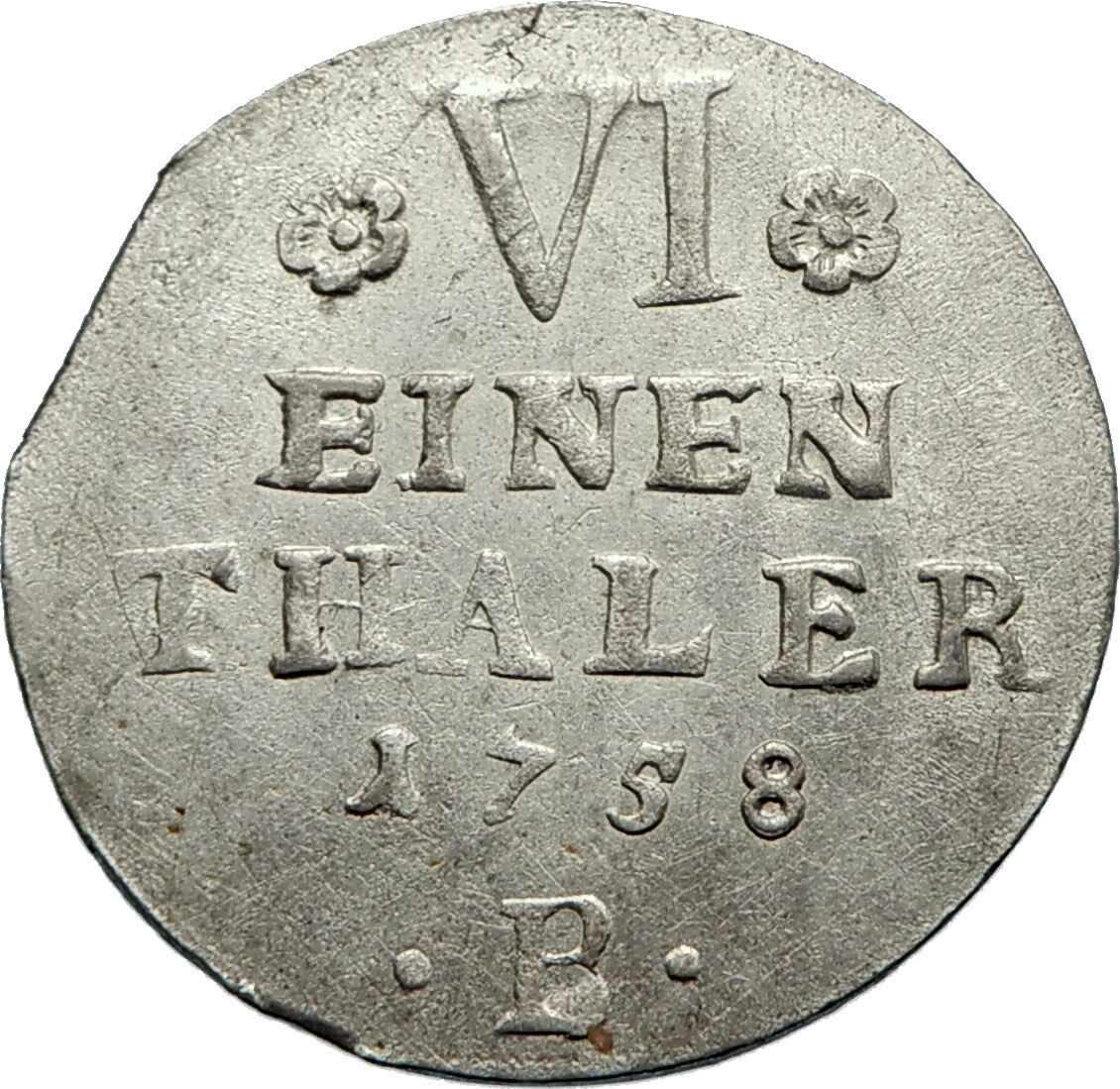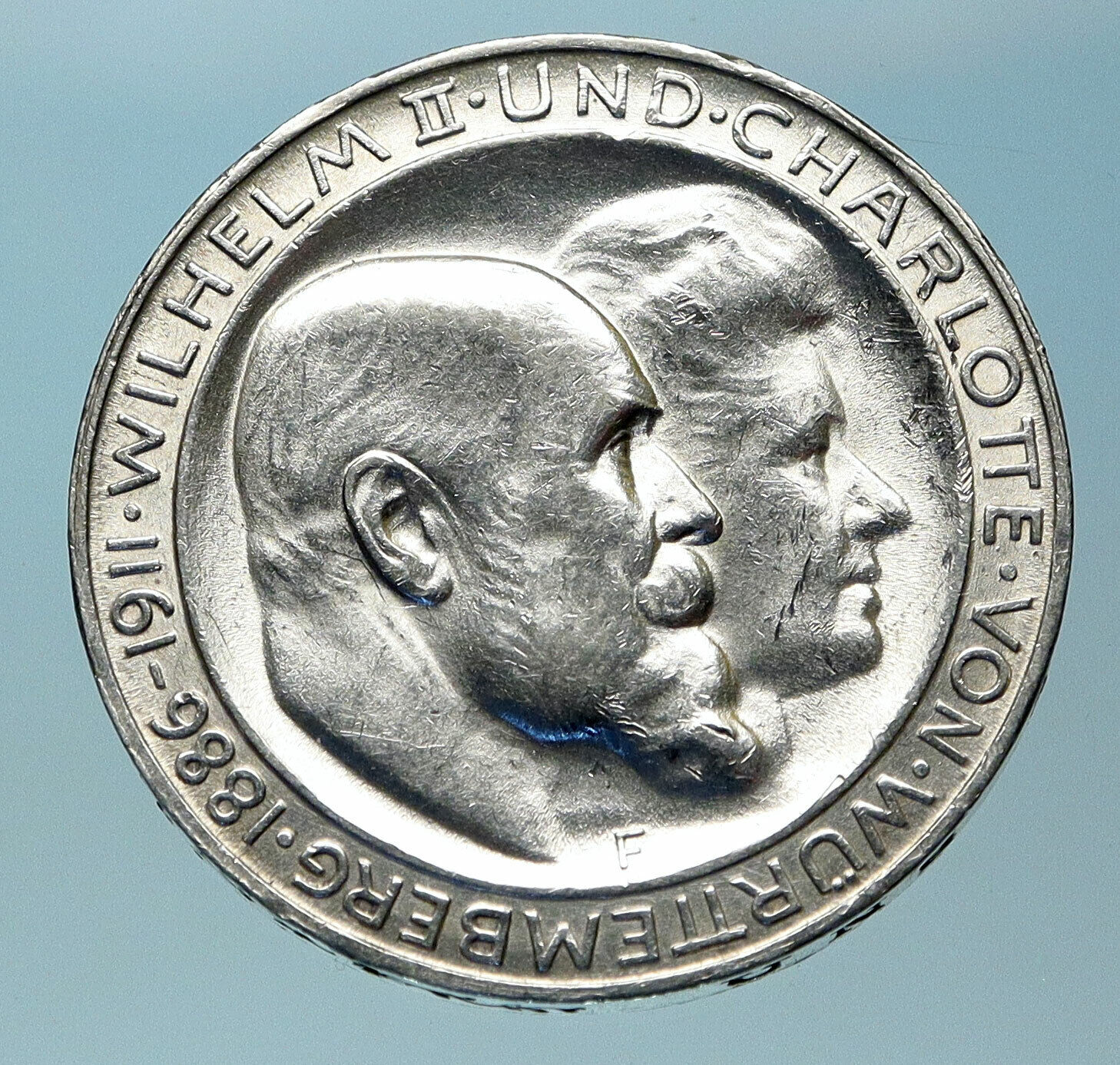|
German States – Bishopric of Wurzburg
Johann Philipp von Greiffenclau zu
Vollraths – Prince-Archbishop: 1699-1719
1715 Silver Kortling (1/84
Gulden) Coin 18mm (1.00 grams)
Reference: KM# 212, Helmschrot# 526
F, Lower arms of Greifenklau
1/84, Value on imperial orb within rhombus.
You are bidding on the exact item pictured, provided with a Certificate of Authenticity and Lifetime Guarantee of Authenticity.
Karl Philipp Freiherr von Greiffenclau zu Vollraths (sometimes also Greifenclau or Vollrads, 1690–1754) was the Prince-Bishop of Würzburg from 1749 to 1754.
 Karl Philipp von Greiffenclau zu Vollraths was born in Vollraths on 1 December 1690, the son of Johann Erwein von Greiffenclau (d. 1727) und Anna Lioba von Sickingen-Sickingen. His father’s brother, Johann Philipp von Greifenclau zu Vollraths, was the Prince-Bishop of Würzburg from 1699 to 1719. Karl Philipp von Greiffenclau zu Vollraths was born in Vollraths on 1 December 1690, the son of Johann Erwein von Greiffenclau (d. 1727) und Anna Lioba von Sickingen-Sickingen. His father’s brother, Johann Philipp von Greifenclau zu Vollraths, was the Prince-Bishop of Würzburg from 1699 to 1719.
He was made a canon (Domizellar) of Würzburg Cathedral in 1705. He studied at the University of Mainz, before being ordained as a priest on 30 May 1728. He served as rector of the University of Mainz from 1739 to 1749.
On 14 April 1749 the cathedral chapter of Würzburg Cathedral elected him to be Prince-Bishop of Würzburg, with Pope Benedict XIV confirming his appointment on 21 July 1749. He was consecrated as a bishop by Daniel Johann Anton von Gebsattel, auxiliary bishop of Würzburg on 5 October 1749.
Karl Philipp von Greiffenclau resumed the Schönborn patronage in Würzburg, and immediately after his reign of government had begun, Balthasar Neumann was reappointed as director of the Würzburg Residence.
He died of tuberculosis on 25 November 1754 and is buried in Würzburg Cathedral.
 The Prince-Bishopric of Würzburg (German: Fürstbistum Würzburg; Hochstift Würzburg) was an ecclesiastical principality of the Holy Roman Empire located in Lower Franconia west of the Prince-Bishopric of Bamberg. Würzburg had been a diocese since 743. As definitely established by the Concordat of 1448, bishops in Germany were chosen by the canons of the cathedral chapter and their election was later confirmed by the pope. Following a common practice in Germany, the prince-bishops of Würzburg were frequently elected to other ecclesiastical principalities as well. The last few prince-bishops resided at the Würzburg Residence, which is one of the grandest baroque palaces in Europe. The Prince-Bishopric of Würzburg (German: Fürstbistum Würzburg; Hochstift Würzburg) was an ecclesiastical principality of the Holy Roman Empire located in Lower Franconia west of the Prince-Bishopric of Bamberg. Würzburg had been a diocese since 743. As definitely established by the Concordat of 1448, bishops in Germany were chosen by the canons of the cathedral chapter and their election was later confirmed by the pope. Following a common practice in Germany, the prince-bishops of Würzburg were frequently elected to other ecclesiastical principalities as well. The last few prince-bishops resided at the Würzburg Residence, which is one of the grandest baroque palaces in Europe.
 As a consequence of the 1801 Treaty of Lunéville, Würzburg, along with the other ecclesiastical states of Germany, was secularized in 1803 and absorbed into the Electorate of Bavaria. In the same year Ferdinand III, former Grand Duke of Tuscany, was compensated with the Electorate of Salzburg. In the 1805 Peace of Pressburg, Ferdinand lost Salzburg to the Austrian Empire, but was compensated with the new Grand Duchy of Würzburg, Bavaria having relinquished the territory in return for the Tyrol. This new state lasted until 1814, when it was once again annexed by Bavaria. As a consequence of the 1801 Treaty of Lunéville, Würzburg, along with the other ecclesiastical states of Germany, was secularized in 1803 and absorbed into the Electorate of Bavaria. In the same year Ferdinand III, former Grand Duke of Tuscany, was compensated with the Electorate of Salzburg. In the 1805 Peace of Pressburg, Ferdinand lost Salzburg to the Austrian Empire, but was compensated with the new Grand Duchy of Würzburg, Bavaria having relinquished the territory in return for the Tyrol. This new state lasted until 1814, when it was once again annexed by Bavaria.
The Roman Catholic Diocese of Würzburg was reestablished in 1821 without temporal power.
The charge of the original coat of arms showed the “Rennfähnlein” banner, quarterly argent and gules, on a lance or, in bend, on a blue shield. In the 14th century another coat of arms was created. The coat of arms represents the holism of heaven and earth. The three white pikes represent the Trinity of God and the four red pikes, directed to earth, stand for the four points of the compass, representing the whole spread of earth. The red colour represents the blood of Christ.
The prince-bishops used both within their personal coat of arms. The Rechen and the Rennfähnlein represented the diocese, while the other (usually two) fields showed the personal coat of arms of the bishop’s family. The coat of arms showed the Rechen in the first and third field, the Rennfähnlein in the second and fourth field.
|





 Karl Philipp von Greiffenclau zu Vollraths was born in Vollraths on 1 December 1690, the son of Johann Erwein von Greiffenclau (d. 1727) und Anna Lioba von Sickingen-Sickingen. His father’s brother, Johann Philipp von Greifenclau zu Vollraths, was the Prince-Bishop of Würzburg from 1699 to 1719.
Karl Philipp von Greiffenclau zu Vollraths was born in Vollraths on 1 December 1690, the son of Johann Erwein von Greiffenclau (d. 1727) und Anna Lioba von Sickingen-Sickingen. His father’s brother, Johann Philipp von Greifenclau zu Vollraths, was the Prince-Bishop of Würzburg from 1699 to 1719. The Prince-Bishopric of Würzburg (German: Fürstbistum Würzburg; Hochstift Würzburg) was an ecclesiastical principality of the Holy Roman Empire located in Lower Franconia west of the Prince-Bishopric of Bamberg. Würzburg had been a diocese since 743. As definitely established by the Concordat of 1448, bishops in Germany were chosen by the canons of the cathedral chapter and their election was later confirmed by the pope. Following a common practice in Germany, the prince-bishops of Würzburg were frequently elected to other ecclesiastical principalities as well. The last few prince-bishops resided at the Würzburg Residence, which is one of the grandest baroque palaces in Europe.
The Prince-Bishopric of Würzburg (German: Fürstbistum Würzburg; Hochstift Würzburg) was an ecclesiastical principality of the Holy Roman Empire located in Lower Franconia west of the Prince-Bishopric of Bamberg. Würzburg had been a diocese since 743. As definitely established by the Concordat of 1448, bishops in Germany were chosen by the canons of the cathedral chapter and their election was later confirmed by the pope. Following a common practice in Germany, the prince-bishops of Würzburg were frequently elected to other ecclesiastical principalities as well. The last few prince-bishops resided at the Würzburg Residence, which is one of the grandest baroque palaces in Europe. As a consequence of the 1801 Treaty of Lunéville, Würzburg, along with the other ecclesiastical states of Germany, was secularized in 1803 and absorbed into the Electorate of Bavaria. In the same year Ferdinand III, former Grand Duke of Tuscany, was compensated with the Electorate of Salzburg. In the 1805 Peace of Pressburg, Ferdinand lost Salzburg to the Austrian Empire, but was compensated with the new Grand Duchy of Würzburg, Bavaria having relinquished the territory in return for the Tyrol. This new state lasted until 1814, when it was once again annexed by Bavaria.
As a consequence of the 1801 Treaty of Lunéville, Würzburg, along with the other ecclesiastical states of Germany, was secularized in 1803 and absorbed into the Electorate of Bavaria. In the same year Ferdinand III, former Grand Duke of Tuscany, was compensated with the Electorate of Salzburg. In the 1805 Peace of Pressburg, Ferdinand lost Salzburg to the Austrian Empire, but was compensated with the new Grand Duchy of Würzburg, Bavaria having relinquished the territory in return for the Tyrol. This new state lasted until 1814, when it was once again annexed by Bavaria.




